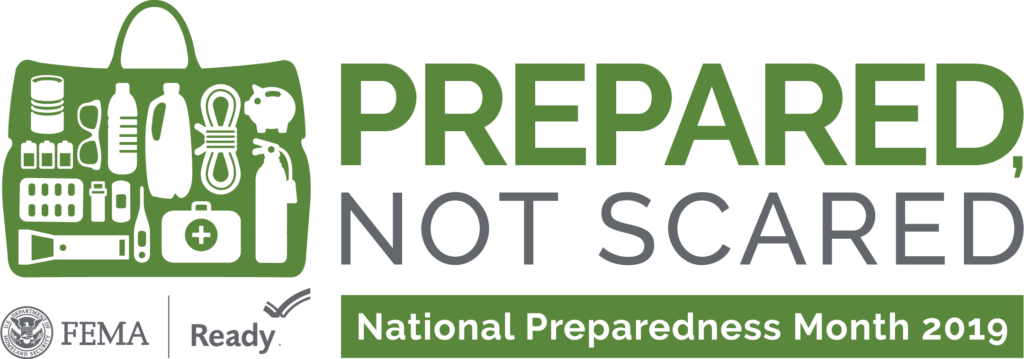Main Content

September is National Preparedness Month – a great time to build awareness of the need for emergency planning. New Jersey 4-H now offers a disaster preparedness program for youth, which teaches young people how to plan to shelter in place or evacuate with their families during an emergency. This program is in line with FEMA guidelines for youth emergency preparedness and can be delivered as a short-term special interest program, a week-long day camp program, or in a club-based setting. For more information, please contact Michelle Teitsma of Warren County 4-H.
Livestock and pet evacuation is not currently included in this curriculum but can be offered as an add-on lesson. This is an important topic for 4-Hers, their families, volunteers, and others involved in animal science to understand, especially during county fairs, shows, or other opportunities for youth to travel with animals.
The State of New Jersey Domestic Security Preparedness Task Force offers these following tips, and more, when preparing for a disaster while caring for livestock:
- It is best to plan ahead and identify a farm or kennel outside of your immediate area that will accept your animals if you need to evacuate. You might consider a reciprocal agreement with another family or farm owner.
- Keep trucks and vans full of fuel at all times, and otherwise well-maintained and ready for evacuation during a disaster. Check the trailer for readiness. Are your tires aired up? Do the brakes work?
- Have enough fresh feed and water on hand to feed livestock for 48-72 hours. Have a livestock or horse first aid kit on hand.
- Keep vaccination and other medical records up to date and in-writing. These documents can be kept in a re-sealable plastic bag or container.
- If evacuating with animals: take sufficient feed and water for all animals for a minimum of 48 hours.
- If evacuating and leaving animals unattended at home: leave animals in the most appropriate area for the type of disaster anticipated (e.g. pasture with high ground if expecting a flood). If you must shelter in place or leave animals, be sure all your livestock are identified. Horses and large stock often get loose during hurricanes, forest fires, or floods. Fences come down, electric wire fails and animals are scared. If animals do not already have tattoos, micro-chips, or eartags, use any means to get your phone number on them – clip it into their hair, use nail polish or permanent marker on their hooves, take a photo of them with you on your phone with any identifying markings.
The Humane Society of the United State offers this pet disaster-preparedness kit, reminding owners to have these things on hand in case of an emergency:
- Food and water for at least five days for each pet.
- The pet’s medications and medical records stored in a waterproof container and a first-aid kit.
- Cat litter box, litter, litter scoop, and garbage bags to collect pet waste. Any familiar toys or blanket that will keep them calm if they have to be left in a temporary shelter.
- Sturdy leashes, harnesses, and carriers to transport pets safely and to ensure that your pets can’t escape.
- Current photos of you with your pets and descriptions of your pets to help others identify them in case you and your pets become separated.
Resources like this could make a great topic for a 4-H club meeting or a member’s public presentation. Guiding other 4-Hers, or their broader communities, in ways to prepare their animals for disaster could also serve as a meaningful 4-H club service project.
By Laura Eppinger, Salem County 4-H Agent, Rutgers Cooperative Extension